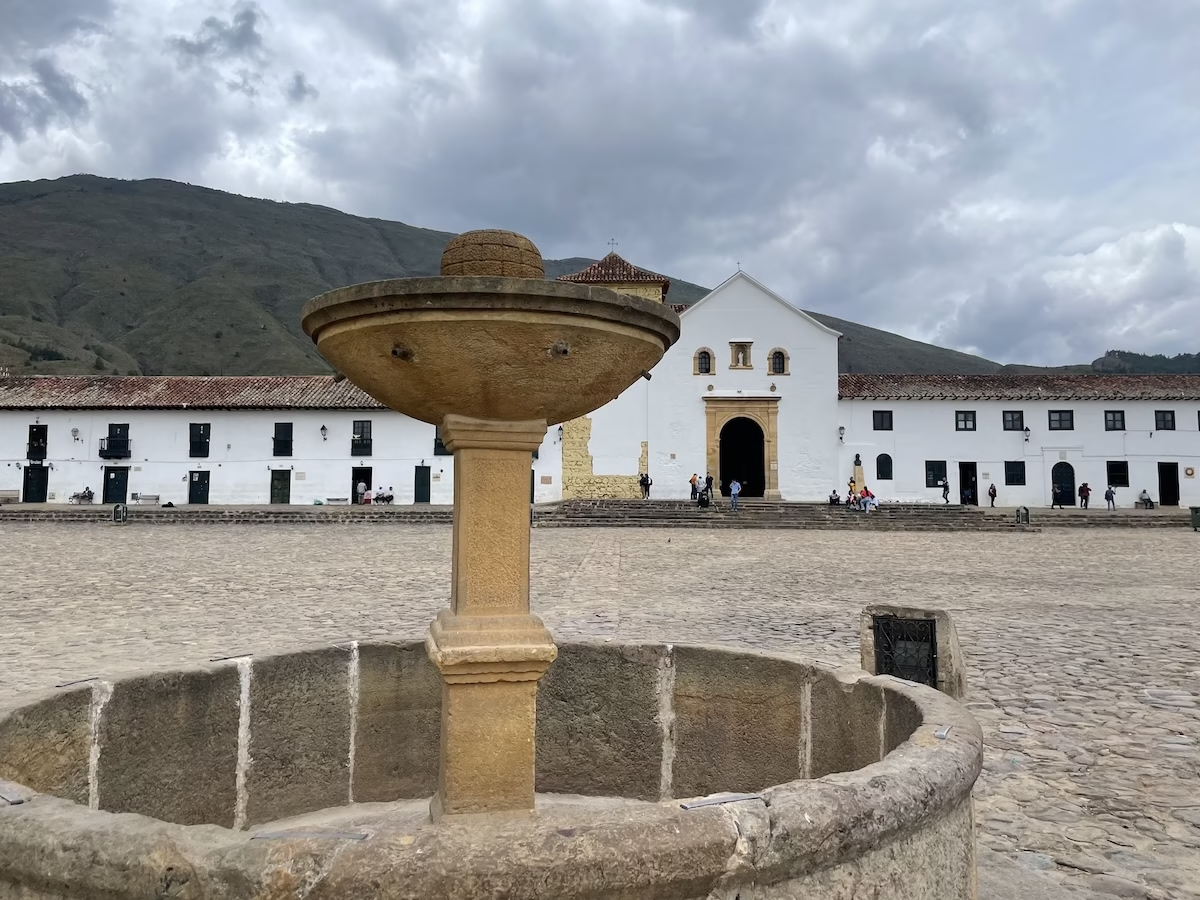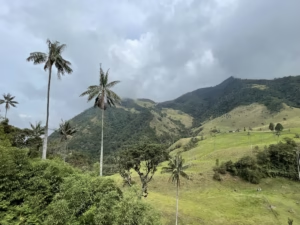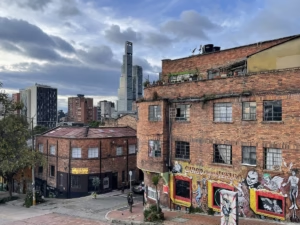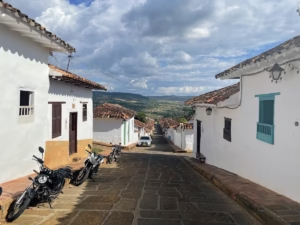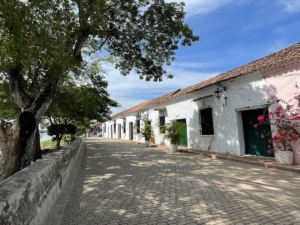It might be a little cliché to describe a place as being “lost in time,” but it’s probably the best phrase to describe the Colombian town of Villa de Leyva. Villa de Leyva is a gorgeous, small, colonial town nestled in the mountains. One of the many gorgeous, small, colonial towns nestled throughout Colombia. It’s only about three hours from Bogotá, but it feels hundreds of years away.
Villa de Leyva’s cobblestone streets and whitewashed buildings date back to the 16th century. Little has changed in the last 400 years, and wandering around Villa de Leyva really does feel like stepping back in time. For those who want to move further back in time, the surrounding area has pre-Colombian Muisca ruins and a fossil museum that can take you back even farther.
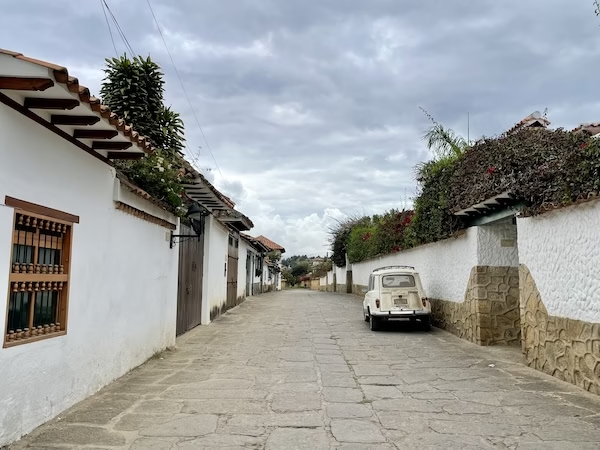
A Brief History of Villa de Leyva and What to Know Before You go
Villa de Leyva, in Colombia’s Boyacá Department, has been inhabited for thousands of years. The Muisca people lived there when the Spanish arrived in the early 1500s. The Spanish founded the town of Villa de Leyva in 1572.
The lack of any major economic interest kept Villa de Leyva much the same as it was in the early colonial days. The Colombian government declared the town a national monument in 1954. Today, strict building codes ensure new construction is built in the colonial style and Villa de Leyva has become one of Colombia’s principal tourist attractions.
Direct buses to Villa de Leyva leave from Bogota’s Northern bus terminal twice a day. The entire trip only takes about three hours. You could also probably transfer in the provincial capital of Tunja.
Villa de Leyva’s climate is dry and arid. The sun can be intense here, so be sure to wear a hat and plenty of sunscreen. The city sits at an altitude of 2,149 meters (7,051 ft), which is generally low enough to avoid altitude sickness, but high enough to keep the temperature ranging from pleasant to a little chilly.
On one of the most fun, but also most stressful, aspects of travel is finding and booking places to stay. These days you have options ranging from dirt cheap hostel dorms to luxurious White Lotus style resorts. Thankfully, the internet is here to make finding accommodation easier.
Hostelworld is the go to app for finding hostels. For everything else, there’s Booking.com. If you book through either of the previous links, I’ll gain a small commission at no extra cost to you.
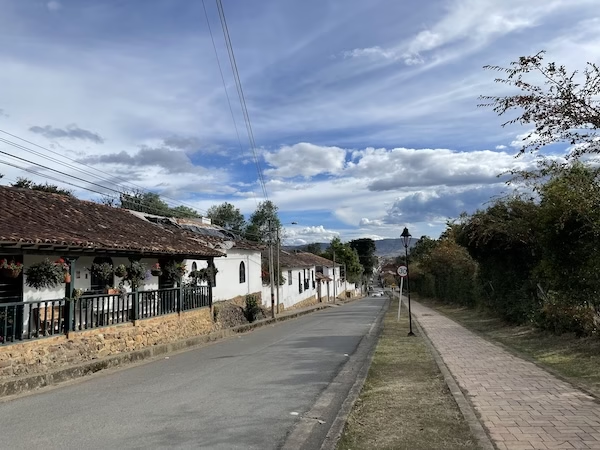
Things to do in Villa de Leyva
Villa de Leyva isn’t an action-packed destination, but there’s still enough to keep you busy for a few days. We spent about five days here and that felt like plenty of time considering the park we’d wanted to visit was closed. That’s okay. Part of the reason to come to Villa de Leyva is to while away the hours wandering into the past.
Pick a Random Street and Wander
Villa de Leyva is a gorgeous little town. We spent days just meandering around admiring the old architecture. There are plenty of alleyways and side streets to explore. You may stumble on a charming stone bridge, or maybe an old public fountain. Or you might just stumble on the uneven cobblestones.
Outside of town, lonely dirt roads wind past farms and ranches as well as what look like tracts of suburban housing developments. Succulents and pine trees line the roads while boulders litter the arid landscape and green mountains stretch out over the horizon. It’s a beautiful landscape.
We failed to find the official hiking trails, but had a great time just wandering. It might seem strange to suggest wandering down random streets in the middle of nowhere in Colombia, but the area around Villa de Leyva is perfectly safe. Just look out for some of the “trails” listed on various map apps. Many of them seem to really be just vacant lots and municipal garbage dumps.

Hang Out in the Plaza Mayor
After strolling around town, the best thing to do in Villa de Leyva is to just hang out in the massive central square. Known as the Plaza Mayor, it’s considered one of the biggest and most impressive in all of Latin America. The square is lined by the town’s colonial cathedral and municipal buildings and can be quite fetching in the right light.
What makes Villa de Leyva’s Plaza Mayor more special, however, is its role as the town’s social heart. People come to the square to hang out. Little kids play soccer on the cobblestones. We saw a march for a local political candidate parading through the square accompanied by red flags, dancing and a crew of funky drummers.
In the evening, locals and tourists alike head to the Plaza Mayor to have a drink and socialize. We bought a bottle of wine from a local convenience store (the clerk helpfully gave us a couple of plastic cups to share) and staked out a spot on the steps in front of the cathedral next to a group of university students. You’ll also find Colombianos in cowboy hats sharing a beer in one of the bars hidden in the corners of the square.
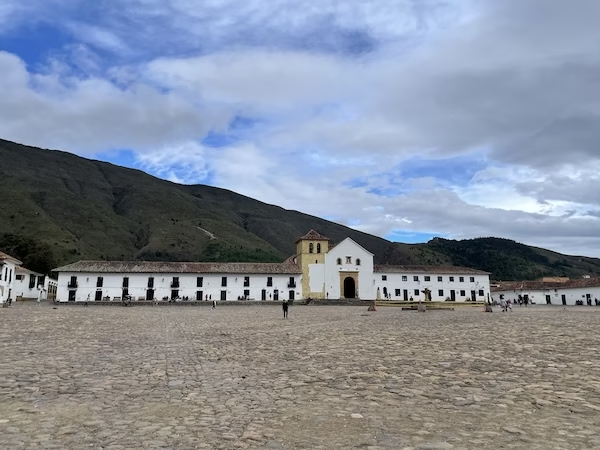
Visit the Fossil Museum
I think I’ve made the point that Villa de Leyva is historic, but the surrounding area is also pre-historic. Millions of years ago, the area was covered by ocean. This feels hard to believe since today the area is arid and mountainous. It feels about as far from the ocean as you can get, but time extends beyond our comprehension and this earth of ours is constantly changing. The sea creatures that once swam above the peaks of the Andes left behind thousands of fossils.
Many of these fossils are exhibited at the Fossil Museum, located a short-ways west of town on Carrera 12. The cool thing about this museum is that it’s community run. It’s also home to the most intact remains of kronosaurus, a terrifying sea creature that’s a relative of modern crocodiles.
The story goes that local farmers found the skeleton while digging in their field. Rather than selling it, they decided to pool together community resources and build a museum around it. Locals brought in other fossils they’d found and Villa de Leyva’s fossil museum was born.
It’s a pretty decent museum and looking at all the fossils definitely brings back memories of being a dinosaur obsessed little kid. You can reach the fossil museum by taxi, taking one of the colectivos that run along Carrera 12 or walking from town.
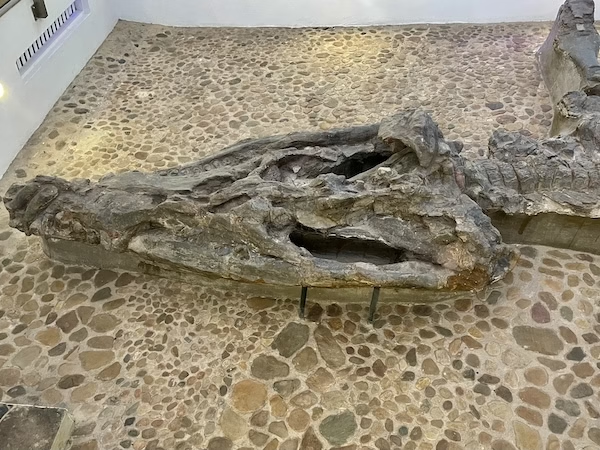
Hike to Las Cascadas La Periquera Waterfalls
The green hills surrounding Villa de Leyva are covered in thick Andean cloud forest. Much of that cloud forest is protected by Iguaque National Park. We weren’t able to get into Iguaque, but the Cascadas La Periquera were a nice alternative.
The Cascadas are a private nature reserve. The reserve has a fairly short, moderate, trail that winds through the cloud forest and passes a few lovely waterfalls. There are also a couple of viewpoints where you can get a vista of the surrounding countryside.
You’ll need to take a taxi from Villa de Leyva to reach Las Cascadas La Periquera, and arrange for the driver to wait for you. Bring water and watch out for the mean dog that lives near the end of the trail. He’s behind a fence that blocks off the most gorgeous view of the hike and makes picture taking at that particular spot practically impossible.
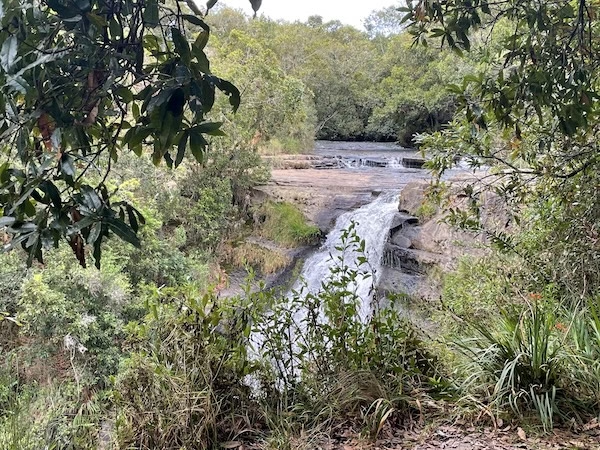
Trying and Failing to Visit Iguaque Park
Part of the whole reason we came to Villa de Leyva was to hike in Iguaque National Park. The park is supposed to be filled with lovely hiking trails that lead through the cloud forest up to the famous and rare Andean páramo. The páramo is a sort of a wet, high-altitude grassland, reminiscent of the English moors. It’s a unique ecosystem that only exists in South America. Besides the páramo and cloud forest, Iguaque also protects a lagoon that the Muisca consider sacred.
I was excited to try and see the páramo for the first time. Unfortunately, we tried numerous entrances on various days and each time found our efforts foiled by large wooden “do not enter” signs.
I tried to research why the park was closed and couldn’t get a straight answer from either online sources or the guy at our hotel. Some said it was closed due to wildfire fire risk. Others said the park was closed due to conflicts with the local indigenous peoples. Apparently, they don’t want tourists stomping around their sacred lagoon, which is fair enough.
I’ve read a few things online saying you should just ignore the signs and hike into the park anyway. Afterall, none of the trails are fenced off or blocked. It’s just a wooden sign that you can easily walk around.
However, I think trespassing in a closed national park is both arrogant, disrespectful and immoral. As travelers, we’re guests in the countries we visit. It’s up to us to obey that country’s rules and regulations. Not only do you risk getting into trouble, but breaking into in a closed national park, especially one that might be closed due to conflicts with the local indigenous people, is a really shitty thing to do.
Needless to say, we skipped Iguaque park and had to wait until later to see the páramo. Since anyone reading my blog is a moral, respectful, traveler I’m sure you’ll skip it, too. Go hike in Las Cascadas La Periquera or down the dirt roads around town instead.
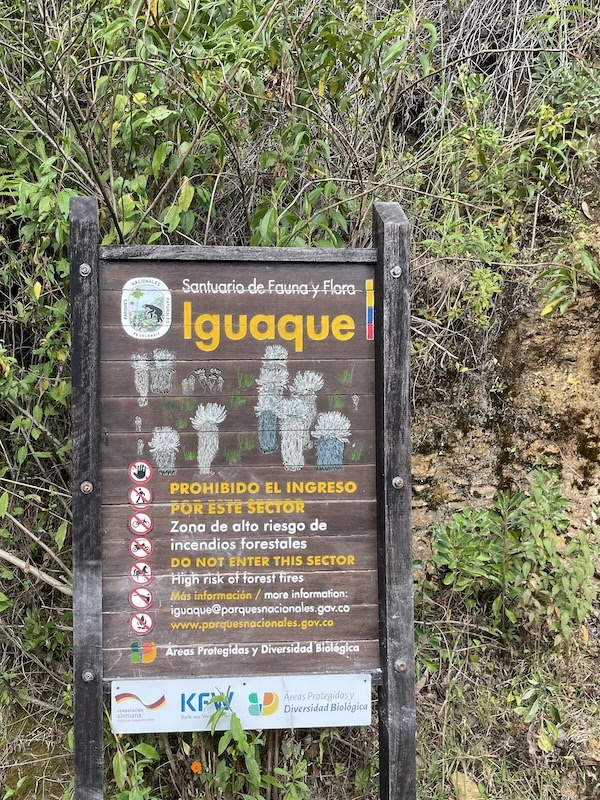
What about the Pozos Azules, the Terracotta House and El Infiernito?
A lot of blogs and travel guides recommend visiting Los Pozos Azules and the Terracotta House as top things to do in Villa de Leyva. To tell you the truth, I think they’re only recommending them to pad their “things to do in Villa de Leyva” lists.
Los Pozos Azules is a group of man-made pools that supposedly take on a beautiful blue hue when they reflect the sky on a sunny day. We walked past them, but it was cloudy, so they just looked like water. Also, they’re man-made. It’d be different if they were a natural phenomenon. Finally, you can’t even swim in them, so what’s the point?
The Terracotta House is just a weird looking house made out of clay. I guess the concept is kind of interesting. Maybe more exciting if you’re really into clay. I caught a glimpse of it from the road and thought it was underwhelming. We didn’t bother to pay the entry fee to examine it closer.
I do regret not going to El Infiernito, an ancient Muisca astronomical observatory. Apparently, the prudish Spanish thought the indigenous pillars were a little too phallic and named the site “little hell.” As someone who is very interested in Native American art and culture as well as phallic misrepresentations of hell, I regret missing out. I don’t even remember why we skipped it, but I’m sure we didn’t have a good excuse. Oh well, that’s how life goes sometimes.
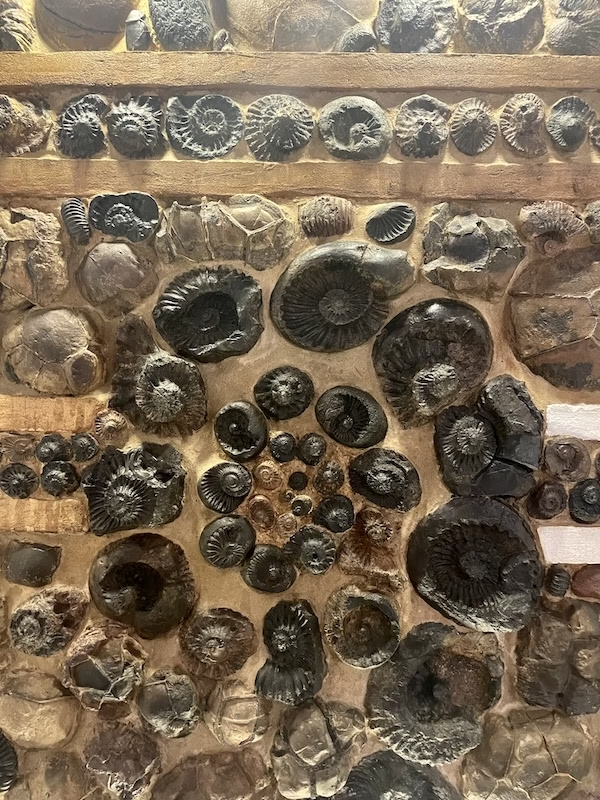
I usually like to travel and do activities independently, but sometimes you want to relax and let someone else take over. For those times, I suggest using Get Your Guide. Prices are reasonable and they have numerous tours available. Click here to explore options in Colombia. Tours booked through these links help support this blog at no extra cost to you.
Final Thoughts on Villa de Leyva
I definitely do not regret visiting Villa de Leyva. The well-preserved Spanish colonial town center really does feel like a world lost to the changes of time. As cliché as that might sound.
You can easily lose track of time yourself, whiling away the hours wandering through Villa de Leyva’s infinitely charming cobblestone streets or hanging out in the central plaza. The town’s lost-in-time feel is amplified by the fact that it’s only a few short hours away from the big, modern city of Bogotá. There’s really no good reason not to take some time out of your Colombia trip to lose yourself for a few days in Villa de Leyva’s bygone charm.
Ready to discover more of Colombia? Check out our guide here: Covering Ground in Colombia: A Travel Guide to One of the World’s Most Magical Countries
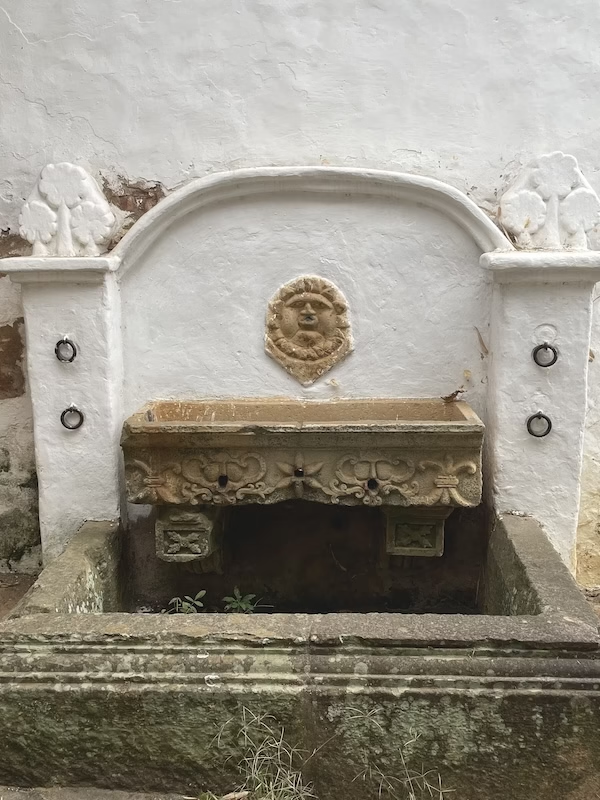
Useful Websites for Traveling Colombia
As much as we might long for the days when you could show up to a town with nothing more than a beat-up guidebook and a sense of adventure, today much of traveling involves being glued to our phones making bookings. I’ve compiled some helpful apps and websites below that at least help make those bookings more convenient so you can spend less time staring at your phone and more time exploring at your surroundings. Some of these sites are affiliate links that give me a small commission at no cost to you if you chose to book through them. All of them are sites I’ve used personally and have no problem recommending.
Just be sure to do your due diligence as much as possible. Only hire local guides and try as much as possible to stay in locally owned hotels and hostels so that your hard earned travel dollars actually go to support the local economies of the places you visit.
Booking.com is basically the world’s only hotel booking website. They have hotels, guesthouses and vacation rentals all over Colombia.
Hostelworld is the go-to site for booking hostels. If dorm rooms and shared bathrooms are your thing, you’ll find hostels all over Colombia.
Get Your Guide offers tours and activities all around the world. Unlike some other sites and apps that do the same thing, you can actually find some reasonably priced deals here.
Red Bus is a super useful resource for booking long distance buses throughout Colombia. If only you could use the app to turn down the air conditioning on the night buses…
Cabify is the best way to book a taxi in Colombia’s major cities. It works like Uber, but you get connected to a licensed, authorized, taxi instead of just some random weirdo.

